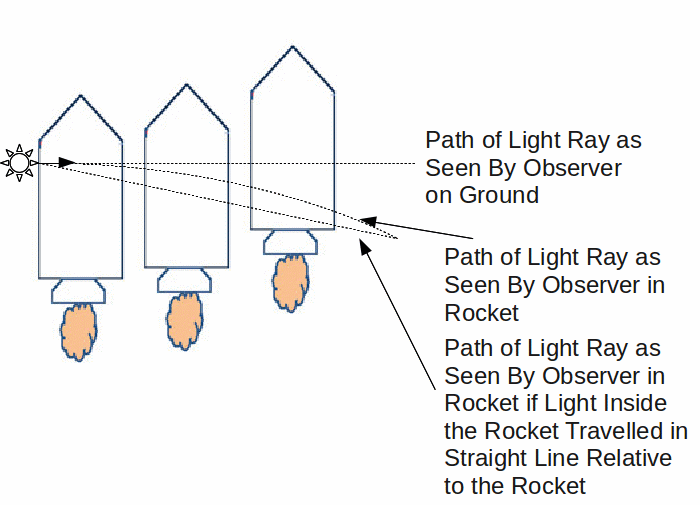The principle of equivalence states:
It is impossible by any experiment carried out in a local reference frame – that is one restricted to a small region of space for a small length of time – whether or not a phenomenon is due to a gravitational field or a uniform acceleration.
The principle of equivalence thus stated directly implies that light does not travel in straight lines as we usually understand it. Consider for example, the path of a light ray from one side of a rocket to another as the rocket accelerates uniformly.
>
Because the rocket is accelerating, it moves up successively greater distances for every 1 m the light beam moves from left to right across the rocket. To an observer inside the rocket, this is equivalent to light moving in a curve. The principle of equivalence then states that light will curve in the presence of a gravitational field.
